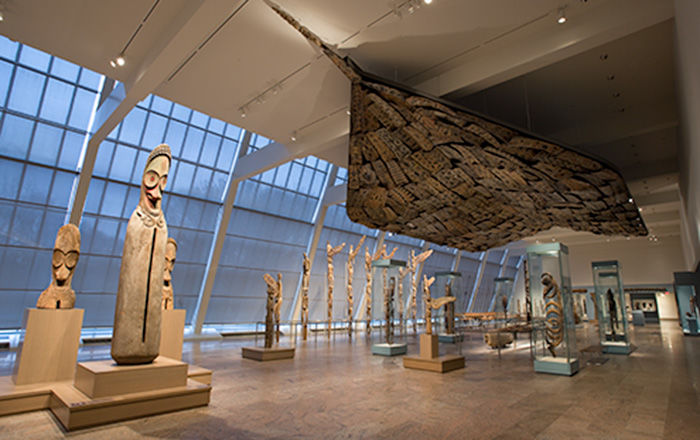Imina walu (buffalo or roan antelope face mask)
In Dogon communities, masquerade performances have played an important role in facilitating the passage of departed male members into the ancestral realm. Face masks feature prominently in public ceremonies marking baga bundo (the time of burial) and dama (the end of mourning). Dama rites are held during the hottest and driest months of the year, roughly three to four years after a burial. Elaborate and costly preparations for this ceremony include the commissioning of dozens of masks evoking figures drawn from both Dogon cosmology and daily life.
While figurative sculptures are made by professional blacksmiths, the creation of funerary masks is a more social process. In the months leading up to dama, performers work collaboratively to create their desired masks. They gather in a secluded area outside the town where the group carves, assembles, paints, and sews the various elements of their face masks and costumes. Mask makers help each other, offering advice or taking over a project with particularly complicated elements. Intricate face masks like the satimbe or omono might have required the support of a blacksmith, whereas more linear, block-cut forms like this walu were likely carved exclusively by performers.
This image cannot be enlarged, viewed at full screen, or downloaded.
This artwork is meant to be viewed from right to left. Scroll left to view more.






